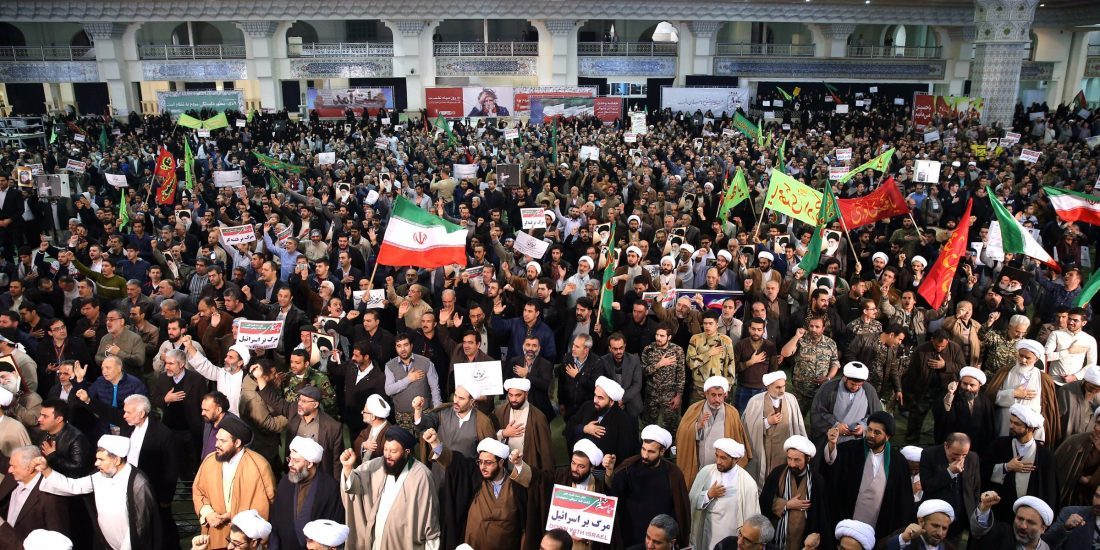Australia/Israel Review
The case for democratic change in Iran
Jul 5, 2018 | Reuel Marc Gerecht & Ray Takeyh

US President Donald Trump’s decision to withdraw from the Iran deal, and to relentlessly pressure the Islamic Republic, has elicited a predictable response. Critics cite history, particularly a counterproductive 1953 coup, as a reason to oppose the strategy. But looking more closely at the past shows that a regime-collapse containment policy is the best way to effect change.
Westerners often look at Iran as an island of autocratic stability, as they once did with the USSR. American and European officials tend to see the mullahs’ tools of repression as indomitable. But for much of the past century, Iran has been locked in a convulsive struggle between rulers wanting to maintain their prerogatives and the ruled seeking freedom.
The Constitutional Revolution of 1905 first injected the notions of popular representation into Iran’s bloodstream. During the first half of the 20th century, feisty parliaments had little compunction about flexing their muscles. The local gentry would marshal the peasants, labourers and tribesmen into polls that would choose each parliament. It wasn’t a Jeffersonian democracy, but the system had legitimacy. Bound to each other by land, family, tradition and the vote, the governing class and the people created mechanisms for addressing grievances. Consequently the parliaments were sensitive to local concerns.
The first Pahlavi monarch, Reza Shah, challenged this system by imposing his will in the name of modernity. After his abdication in 1941, constitutional rule again gained strength. Yet it was Prime Minister Mohammad Mossadegh, deposed in the 1953 coup, who tried to derail Iran’s democratic evolution. Forget for a moment the nefarious Central Intelligence Agency intrigue; what happened in 1953 was an Iranian initiative.
There is a fundamental rule about American interventionism today: It takes two to tango. The 1953 coup proves it. Mossadegh, who had once been a champion of the rule of law and national sovereignty, became increasingly autocratic and vainglorious after Parliament nationalised the Anglo-Persian Oil Co. in 1951. In trying to navigate the financially ruinous aftershocks of that decision, the prime minister rigged elections, sought to disband the parliament, and usurped the powers of the monarchy.
Iran’s politicians, military men and mullahs then came together to take down the premier. The public mostly rallied to the monarch, Mohammad Reza, a figurehead around whom diverse forces gathered. The CIA was involved in the coup planning but gave up once the initial operation failed. Iranians took control and removed the prime minister. In doing so, they sought to revive their economy and protect their political institutions. Mossadegh fell not because of a plot hatched in Langley but because he lost elite and popular support within his own country.
After naming himself “king of kings” in 1971, Mohammad Reza did his best to subvert good governance. He wasted much of Iran’s oil wealth on arms. He reduced the venerable Iranian parliament to a rubber stamp. His secret police managed to be incompetent and hated. He alienated the clergy and replaced the old elite with a coterie of sycophants.
Yet the 1979 Revolution, which overthrew the Shah, was bound to disappoint a public clamouring for democracy. The first constituency to give up on theocracy was the students, whose protest in 1999 ended the attempt by the regime to reform itself. Then came the titanic Green Movement of 2009. A fraudulent presidential election sparked a massive protest that discredited the regime among the middle class. In December 2017, nearly 100 Iranian cities and towns erupted in protest. The poor were thought to be the regime’s last bastion of power, tied to theocracy by piety and the welfare state. Yet this time they hurled damning chants.
Current President Hassan Rouhani, a lacklustre apparatchik of the security state, once thought that a nuclear deal would generate sufficient foreign investment to placate discontent. That aspiration failed even before the advent of President Trump. The Islamic Republic – with its lack of a reliable banking system or anything resembling the rule of law – is too turbulent to attract enough investors. It is probably internally weaker than the Soviet Union was in the 1970s.
The essential theme in modern Iranian history is a populace seeking to emancipate itself from tyranny – monarchic and Islamist. Devising a strategy to collapse the clerical regime isn’t difficult: The US can draw on Persian history and on experience with the Soviet Union. It will require patience. Iranians usually don’t hold 1953 against the US. Neither do the children of the revolutionary elite, who so often find their way to the US and Britain. The biggest hurdle for Western policymakers is self-imposed: they need to take seriously the Iranian quest for democracy.
Reuel Marc Gerecht is a senior fellow at the Foundation for Defence of Democracies. Ray Takeyh is a senior fellow at the Council on Foreign Relations. Republished from the Wall Street Journal. © Foundation for Defence of Democracies, reprinted by permission, all rights reserved.
Tags: Iran






